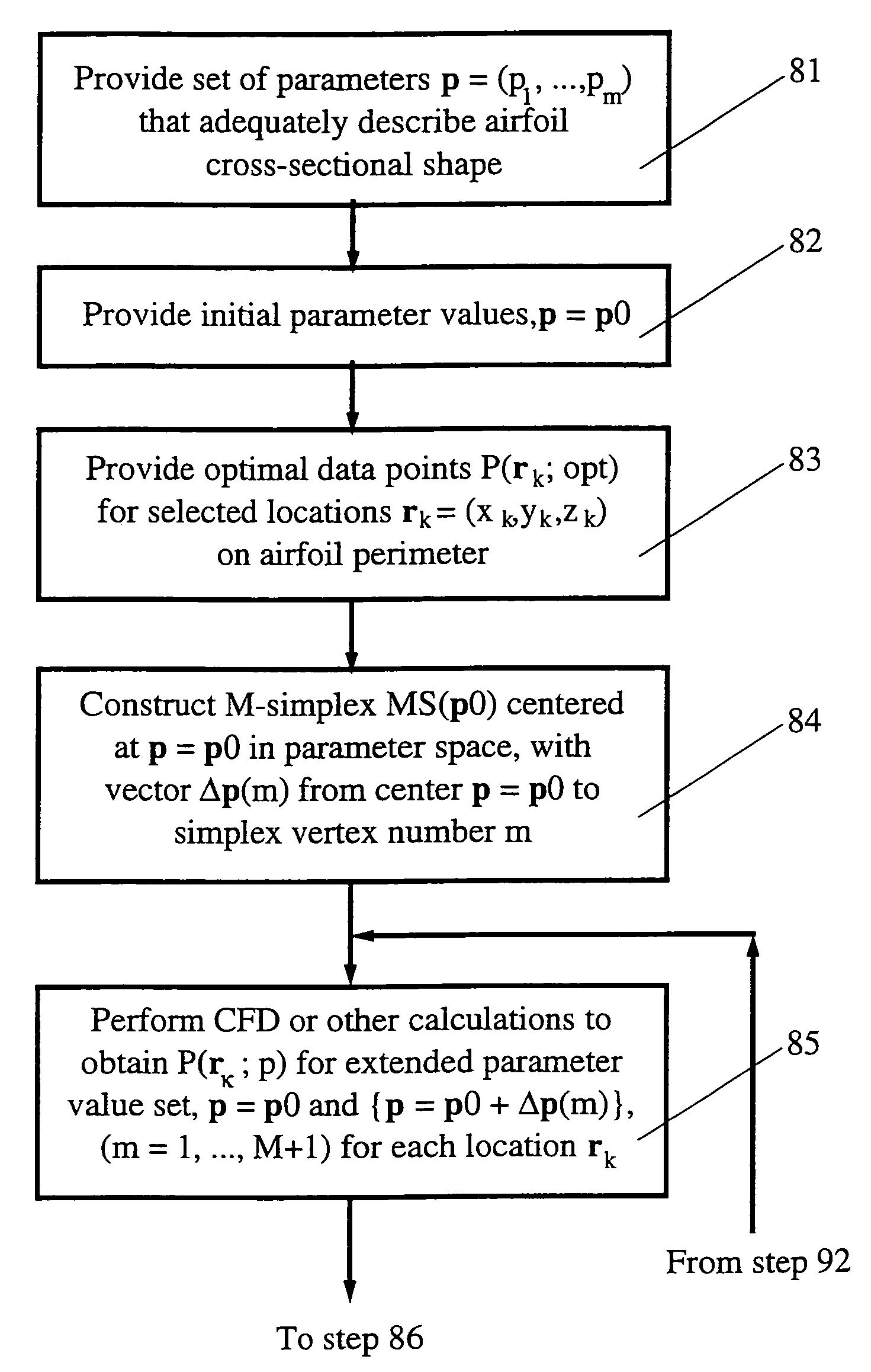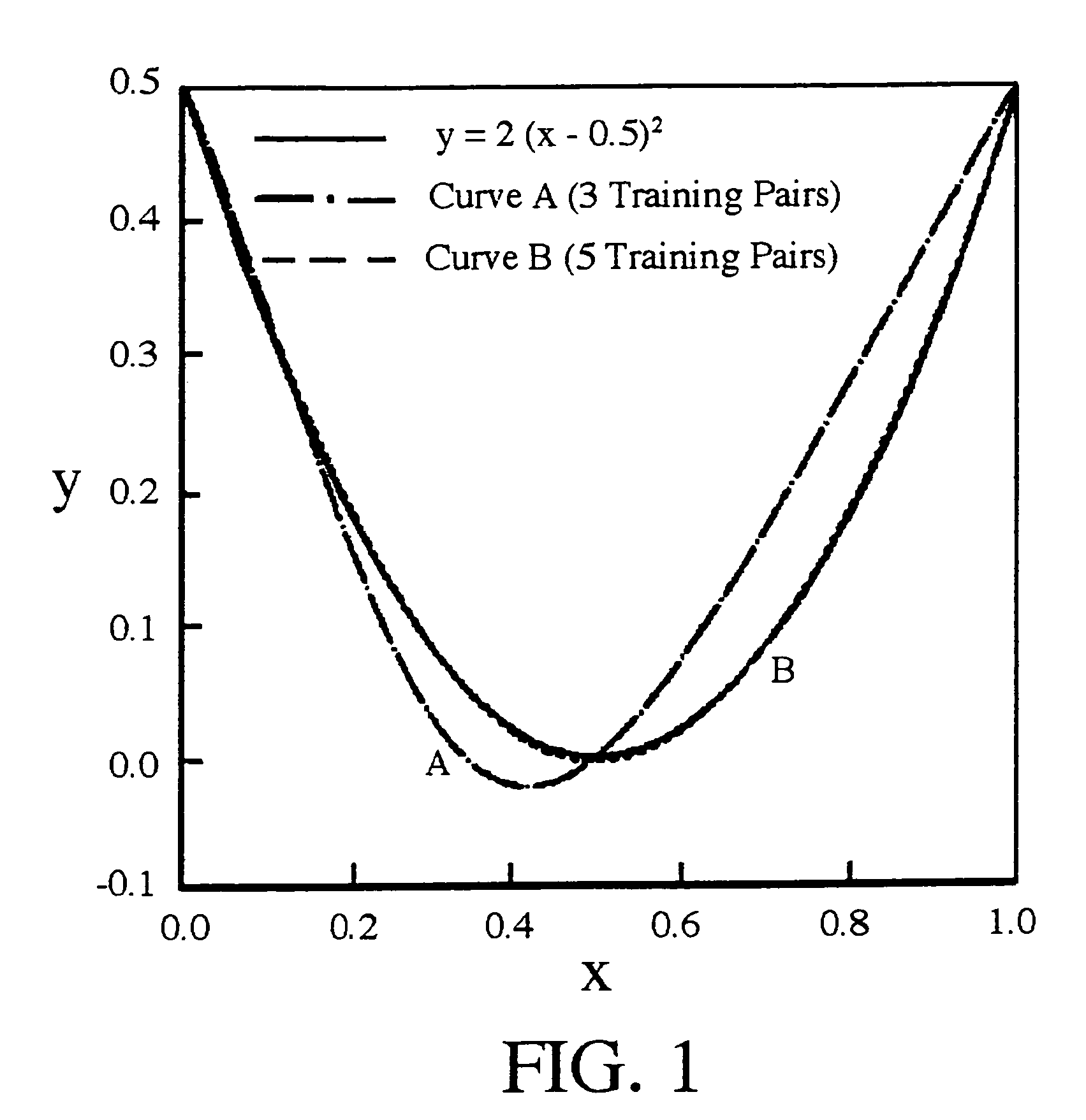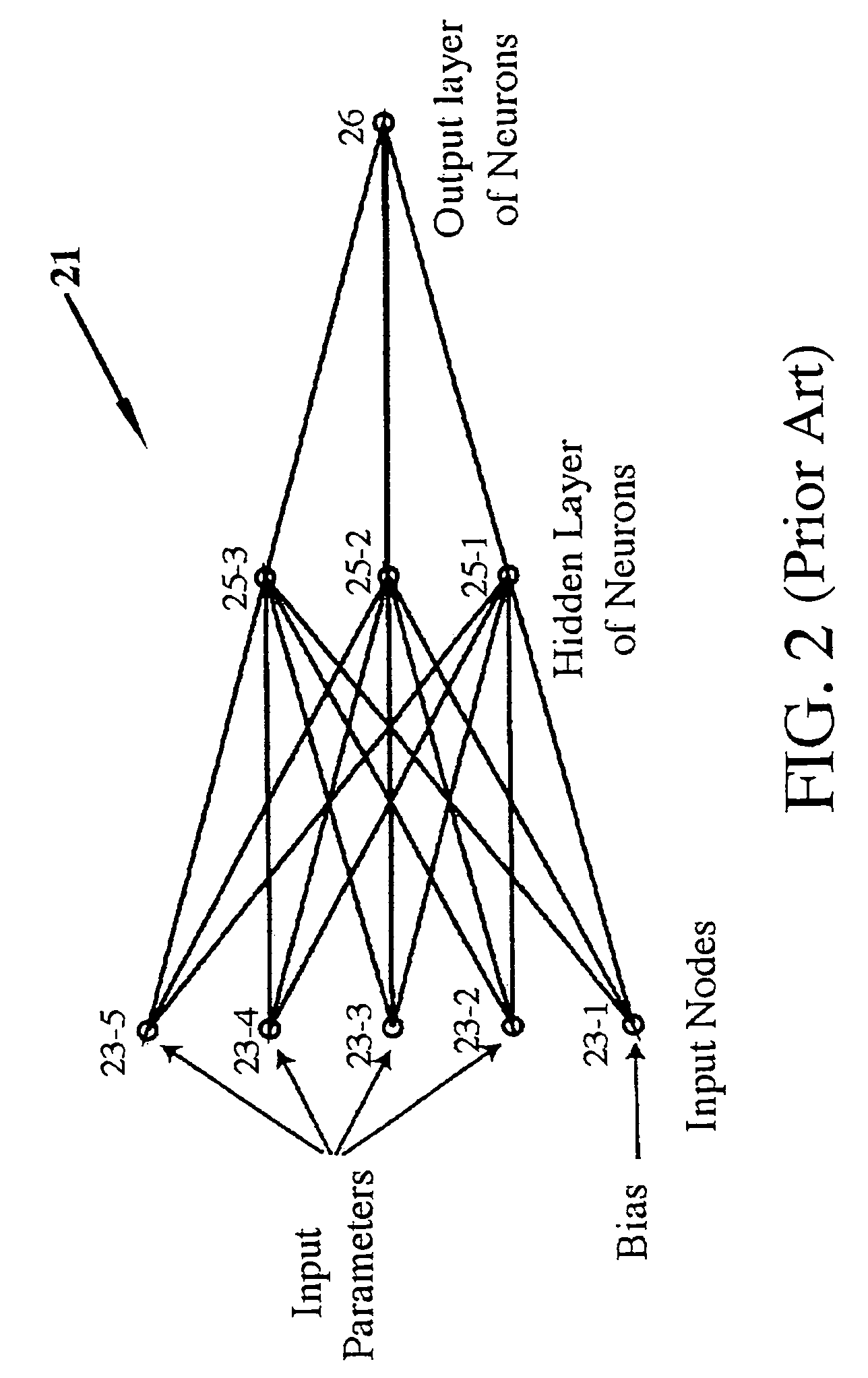Hybrid neural network and support vector machine method for optimization
a neural network and support vector machine technology, applied in the field of design optimization, can solve the problems of not taking into account certain fluid parameters, difficult and expensive to quickly evaluate the effects, and difficult to perform design optimization using this method
- Summary
- Abstract
- Description
- Claims
- Application Information
AI Technical Summary
Benefits of technology
Problems solved by technology
Method used
Image
Examples
Embodiment Construction
[0025]Consider a feed-forward neural network 21 having an input layer with nodes 23-m (m=1, . . . , 5), a hidden layer with nodes 25-n (n=1, 2, 3), and an output node 26, as illustrated schematically in FIG. 2. The first input layer node 23-1 has a bias input value 1, in appropriate units. The remaining nodes of the input layer are used to enter selected parameter values as input variables, expressed as a vector p=(p1, . . . , pM), with M≧1. Each node 25-n of the hidden layer is associated with a nonlinear activation function
[0026]qn=Φn(∑m=1MCnm·Pm)(1)
of a weighted sum of the parameter values pm, where Cnm is a connection weight, which can be positive, negative or zero, linking an input node 23-m with a hidden layer node 25-n. The output of the network 21 is assumed for simplicity, initially, to be a single-valued scalar,
[0027]r=∑n=1NDn·qn.(2)
[0028]FIG. 2 illustrates a conventional three-layer NN, with an input layer, a hidden layer and an output layer that receives and combines...
PUM
 Login to View More
Login to View More Abstract
Description
Claims
Application Information
 Login to View More
Login to View More - R&D
- Intellectual Property
- Life Sciences
- Materials
- Tech Scout
- Unparalleled Data Quality
- Higher Quality Content
- 60% Fewer Hallucinations
Browse by: Latest US Patents, China's latest patents, Technical Efficacy Thesaurus, Application Domain, Technology Topic, Popular Technical Reports.
© 2025 PatSnap. All rights reserved.Legal|Privacy policy|Modern Slavery Act Transparency Statement|Sitemap|About US| Contact US: help@patsnap.com



